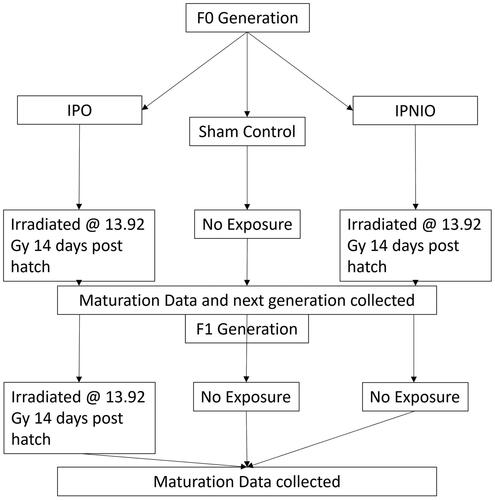Article title: Radiation induces stress and transgenerational impacts in the cricket, Acheta domesticus
Authors: Xiaobing Li & C. D. Rollo
Journal: International Journal of Radiation Biology
Bibliometrics: Volume 98, Issue 6; Pages 1098–1105
DOI: https://doi.org/10.1080/09553002.2021.1872816
In the original version of this article, published online 20 January 2021, the authors had incorrectly calculated the dose-rate calculation. The dose-rate originally detailed at a distance of 16.4 cm was quoted as 0.25 Gy/min, but it has since been discovered that it was 0.58 Gy/min, affecting the total doses that the specimens were exposed to, changing the total dose from 6 Gys to 13.92 Gys.
The authors apologize for this error and wish to correct the literature and affected image. The authors confirm that no other aspects of the article were impacted by this error and that these changes do not impact the validity of their results.
Figure 1. Experimental design of experiment. Eggs were collected in ovipositing mediums placed inside the main breeding colony and reared until hatch. 14 days post hatch crickets were randomly assigned one of three groups, sham control, irradiated parents and offspring (IPO), or Irradiated Parents and Non-Irradiated Offspring (IPNIO). All three F0 groups were kept separately for the duration of the experiment. At 14 days post hatch, all three groups were transported to the Taylor Source, but only IPO and IPNIO were exposed to radiation (13.92 Gy). F0 Maturation data and F1 eggs were then collected from the three F0 groups. 14 days after the F1 groups hatched, all three groups were transported to the Taylor Source, but only IPO was exposed to radiation (13.92 Gy). Maturation data was collected from the F1 groups.

The authors apologize for any inconvenience that may have been caused.
